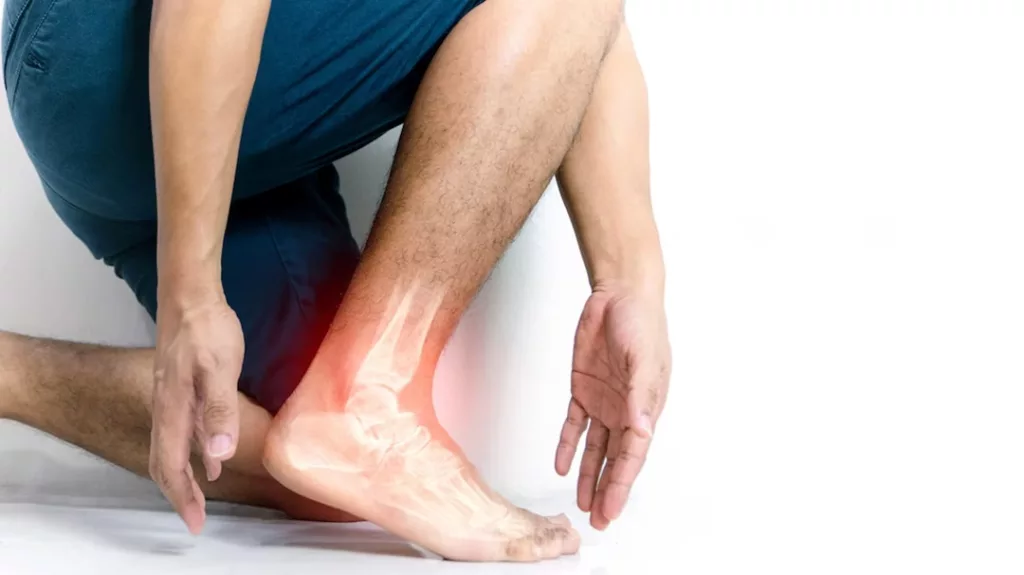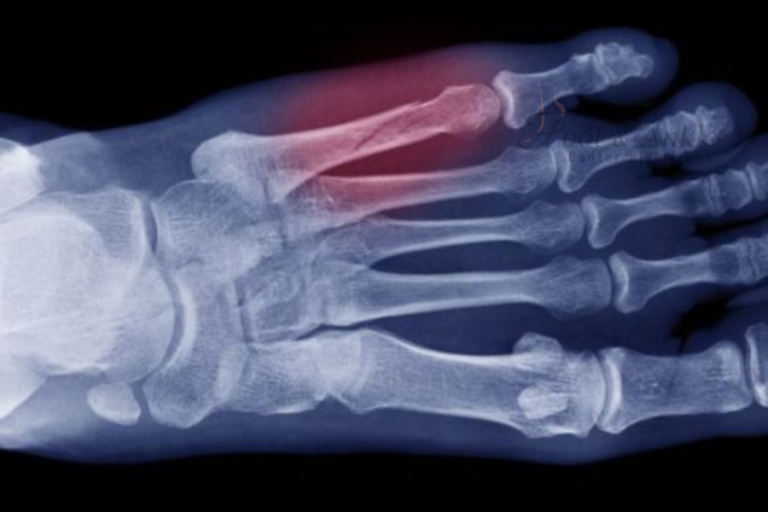1. Introduction
Ankle Arthritis Treatment can significantly affect your mobility and quality of life, causing persistent pain, stiffness, and swelling. Whether you’re an athlete, someone recovering from an injury, or dealing with age-related wear and tear, early diagnosis and treatment are essential for managing symptoms and preventing further joint damage. This article explores the most effective treatment for ankle arthritis, from conservative methods to surgical options.
2. Understanding Ankle Arthritis
Ankle arthritis occurs when the cartilage in the ankle joint wears down, causing bones to rub against each other. This leads to pain, inflammation, and stiffness. The most common types include:
- Osteoarthritis: Age-related wear and tear on the joint.
- Rheumatoid Arthritis: An autoimmune condition causing joint inflammation.
- Post-Traumatic Arthritis: Arthritis that develops after an injury, such as a fracture or severe sprain.
Common symptoms include persistent pain, swelling, reduced range of motion, and difficulty walking.
3. Diagnosis of Ankle Arthritis
Diagnosing ankle arthritis involves a thorough physical examination and imaging tests. Your doctor may:
- Conduct a Physical Exam: Checking for tenderness, swelling, and range of motion limitations.
- Order Imaging Tests: X-rays reveal joint space narrowing, while MRIs or CT scans provide detailed images of cartilage and bone damage.
Accurate diagnosis is key to selecting the right treatment for ankle arthritis tailored to your needs.
4. Non-Surgical Treatments for Ankle Arthritis
For many, non-surgical treatments effectively manage ankle arthritis symptoms.
- Lifestyle Modifications:
Maintaining a healthy weight reduces stress on the ankle joint. Avoid high-impact activities that may worsen symptoms, opting for low-impact exercises like swimming or cycling instead. - Physical Therapy:
A physical therapist can design exercises to strengthen the muscles around your ankle, improving support and stability. Stretching routines can help maintain flexibility and reduce stiffness. - Medications:
Over-the-counter NSAIDs like ibuprofen can reduce pain and inflammation. In more severe cases, prescription medications may be recommended. - Orthotic Devices:
Custom shoe inserts can improve foot alignment, while ankle braces provide additional support and stability. - Injections:
Corticosteroid injections can provide temporary relief from inflammation and pain. Hyaluronic acid injections may help lubricate the joint, improving movement.
5. Surgical Treatments for Ankle Arthritis
If non-surgical methods don’t provide sufficient relief, surgical options may be necessary.
- Arthroscopic Debridement:
A minimally invasive procedure to remove loose cartilage or bone spurs from the joint. - Ankle Fusion (Arthrodesis):
The bones in the ankle joint are fused together to eliminate pain, though this limits joint movement. - Total Ankle Replacement (Arthroplasty):
The damaged joint is replaced with an artificial implant, preserving more natural movement. This procedure is ideal for those seeking to maintain mobility but comes with potential risks like implant loosening over time.
6. Alternative and Complementary Therapies
Some people find relief through alternative treatments:
- Acupuncture: May help reduce pain and improve circulation in the affected joint.
- Dietary Supplements: Glucosamine and chondroitin are popular supplements that may support joint health.
- Massage and Chiropractic Care: Gentle manipulation can help alleviate tension and improve joint function.
7. Home Remedies and Self-Care Tips
Incorporating home remedies can enhance the effectiveness of other treatments.
- Ice and Heat Therapy: Apply ice to reduce swelling and heat to relax stiff muscles.
- Gentle Stretching: Regularly stretch your ankle to maintain flexibility.
- Footwear: Wear supportive shoes with cushioned soles to reduce joint stress.
8. Preventing Further Joint Damage
Proactive steps can help prevent the progression of ankle arthritis:
- Early Intervention: Address symptoms early to slow the disease’s progression.
- Low-Impact Exercise: Activities like swimming or yoga help maintain joint health without stressing the ankle.
- Avoid Overuse: Limit activities that cause pain or discomfort to the ankle.
9. When to See a Specialist
If your symptoms worsen or you experience severe pain, it’s time to consult a specialist. Signs to watch for include:
- Persistent swelling and stiffness.
- Difficulty walking or bearing weight on the ankle.
- Symptoms that don’t improve with home treatments.
An orthopedic specialist or podiatrist can recommend advanced treatment for ankle arthritis tailored to your condition.
10. FAQs
- Q1: What is the best treatment for ankle arthritis?
The best treatment varies depending on the severity of the condition. Non-surgical treatments like physical therapy and medications are effective for many, while surgery may be needed for advanced cases. - Q2: Can ankle arthritis be cured without surgery?
While there’s no cure, non-surgical treatments can effectively manage symptoms and slow progression. - Q3: How long does recovery take after ankle surgery?
Recovery can take several months, depending on the type of surgery. Physical therapy is often required to regain strength and mobility. - Q4: Are there any natural remedies for ankle arthritis pain?
Yes, natural remedies like ice/heat therapy, stretching, and dietary supplements can help alleviate symptoms. - Q5: How can I prevent ankle arthritis from getting worse?
Early intervention, regular low-impact exercise, and avoiding activities that strain the joint can help prevent progression.
11. Conclusion
Ankle arthritis can be challenging, but with the right combination of treatments, you can manage symptoms and maintain an active lifestyle. From lifestyle modifications and physical therapy to surgical options, there are numerous ways to address the condition. If you’re experiencing persistent ankle pain, consult a healthcare professional for a personalized treatment plan.




